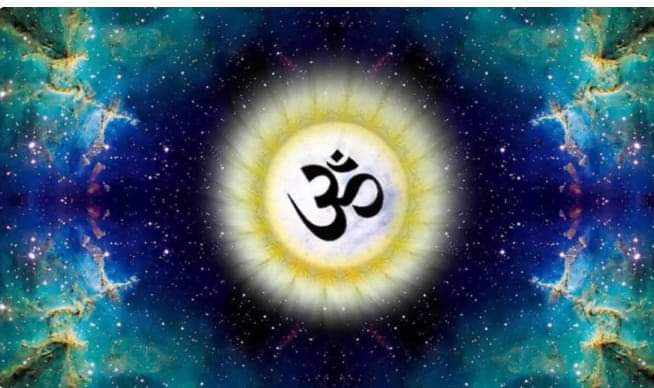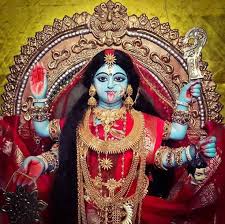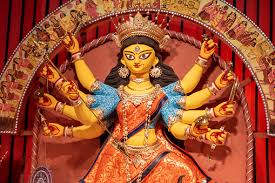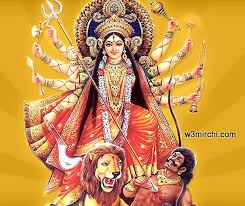निर्वाण · त्रिरत्न · पँचशील
अहम व्यक्ति
गौतम बुद्ध · बोधिसत्व
क्षेत्रानुसार बौद्ध धर्म
दक्षिण-पूर्वी बौद्ध धर्म
· चीनी बौद्ध धर्म
· तिब्बती बौद्ध धर्म ·
पश्चिमी बौद्ध धर्म
बौद्ध साम्प्रदाय
थेरावाद · महायान
· वज्रयान
बौद्ध साहित्य
त्रिपतक · पाळी ग्रंथ संग्रह
· विनय
· पाऴि सूत्र · महायान सूत्र
· अभिधर्म · बौद्ध तंत्र
उनका जन्म 563 ईस्वी पूर्व के बीच शाक्य गणराज्य की तत्कालीन राजधानी कपिलवस्तु के निकट लुम्बिनी में हुआ था, जो नेपाल में है।[16] लुम्बिनी वन नेपाल के तराई क्षेत्र में कपिलवस्तु और देवदह के बीच नौतनवा स्टेशन से 8 मील दूर पश्चिम में रुक्मिनदेई नामक स्थान के पास स्थित था। कपिलवस्तु की महारानी महामाया देवी के अपने नैहर देवदह जाते हुए रास्ते में प्रसव पीड़ा हुई और वहीं उन्होंने एक बालक को जन्म दिया। शिशु का नाम सिद्धार्थ रखा गया।[17] गौतम गोत्र में जन्म लेने के कारण वे गौतम भी कहलाए। क्षत्रिय राजा शुद्धोधन उनके पिता थे। परंपरागत कथा के अनुसार सिद्धार्थ की माता का उनके जन्म के सात दिन बाद निधन हो गया था। उनका पालन पोषण उनकी मौसी और शुद्दोधन की दूसरी रानी महाप्रजावती (गौतमी)ने किया। शिशु का नाम सिद्धार्थ दिया गया, जिसका अर्थ है “वह जो सिद्धी प्राप्ति के लिए जन्मा हो”। जन्म समारोह के दौरान, साधु द्रष्टा आसित ने अपने पहाड़ के निवास से घोषणा की- बच्चा या तो एक महान राजा या एक महान पवित्र पथ प्रदर्शक बनेगा।[18] शुद्दोधन ने पांचवें दिन एक नामकरण समारोह आयोजित किया और आठ ब्राह्मण विद्वानों को भविष्य पढ़ने के लिए आमंत्रित किया। सभी ने एक सी दोहरी भविष्यवाणी की, कि बच्चा या तो एक महान राजा या एक महान पवित्र आदमी बनेगा।[18] दक्षिण मध्य नेपाल में स्थित लुंबिनी में उस स्थल पर महाराज अशोक ने तीसरी शताब्दी ईसा पूर्व बुद्ध के जन्म की स्मृति में एक स्तम्भ बनवाया था। बुद्ध का जन्म दिवस व्यापक रूप से थएरावदा देशों में मनाया जाता है।[18] सिद्धार्थ का मन वचपन से ही करुणा और दया का स्रोत था। इसका परिचय उनके आरंभिक जीवन की अनेक घटनाओं से पता चलता है। घुड़दौड़ में जब घोड़े दौड़ते और उनके मुँह से झाग निकलने लगता तो सिद्धार्थ उन्हें थका जानकर वहीं रोक देता और जीती हुई बाजी हार जाता। खेल में भी सिद्धार्थ को खुद हार जाना पसंद था क्योंकि किसी को हराना और किसी का दुःखी होना उससे नहीं देखा जाता था। सिद्धार्थ ने चचेरे भाई देवदत्त द्वारा तीर से घायल किए गए हंस की सहायता की और उसके प्राणों की रक्षा की।
सिद्धार्थ ने गुरु विश्वामित्र के पास वेद और उपनिषद् को तो पढ़ा ही , राजकाज और युद्ध-विद्या की भी शिक्षा ली। कुश्ती, घुड़दौड़, तीर-कमान, रथ हाँकने में कोई उसकी बराबरी नहीं कर पाता। सोलह वर्ष की उम्र में सिद्धार्थ का कन्या यशोधरा के साथ विवाह हुआ। पिता द्वारा ऋतुओं के अनुरूप बनाए गए वैभवशाली और समस्त भोगों से युक्त महल में वे यशोधरा के साथ रहने लगे जहाँ उनके पुत्र राहुल का जन्म हुआ। लेकिन विवाह के बाद उनका मन वैराग्य में चला और सम्यक सुख-शांति के लिए उन्होंने अपने परिवार का त्याग कर दिया।
राजा शुद्धोधन ने सिद्धार्थ के लिए भोग-विलास का भरपूर प्रबंध कर दिया। तीन ऋतुओं के लायक तीन सुंदर महल बनवा दिए। वहाँ पर नाच-गान और मनोरंजन की सारी सामग्री जुटा दी गई। दास-दासी उसकी सेवा में रख दिए गए। पर ये सब चीजें सिद्धार्थ को संसार में बाँधकर नहीं रख सकीं। वसंत ऋतु में एक दिन सिद्धार्थ बगीचे की सैर पर निकले। उन्हें सड़क पर एक बूढ़ा आदमी दिखाई दिया। उसके दाँत टूट गए थे, बाल पक गए थे, शरीर टेढ़ा हो गया था। हाथ में लाठी पकड़े धीरे-धीरे काँपता हुआ वह सड़क पर चल रहा था। दूसरी बार कुमार जब बगीचे की सैर को निकला, तो उसकी आँखों के आगे एक रोगी आ गया। उसकी साँस तेजी से चल रही थी। कंधे ढीले पड़ गए थे। बाँहें सूख गई थीं। पेट फूल गया था। चेहरा पीला पड़ गया था। दूसरे के सहारे वह बड़ी मुश्किल से चल पा रहा था। तीसरी बार सिद्धार्थ को एक अर्थी मिली। चार आदमी उसे उठाकर लिए जा रहे थे। पीछे-पीछे बहुत से लोग थे। कोई रो रहा था, कोई छाती पीट रहा था, कोई अपने बाल नोच रहा था। इन दृश्यों ने सिद्धार्थ को बहुत विचलित किया। उन्होंने सोचा कि ‘धिक्कार है जवानी को, जो जीवन को सोख लेती है। धिक्कार है स्वास्थ्य को, जो शरीर को नष्ट कर देता है। धिक्कार है जीवन को, जो इतनी जल्दी अपना अध्याय पूरा कर देता है। क्या बुढ़ापा, बीमारी और मौत सदा इसी तरह होती रहेगी सौम्य? चौथी बार कुमार बगीचे की सैर को निकला, तो उसे एक संन्यासी दिखाई पड़ा। संसार की सारी भावनाओं और कामनाओं से मुक्त प्रसन्नचित्त संन्यासी ने सिद्धार्थ को आकृष्ट किया।
सुंदर पत्नी यशोधरा, दुधमुँहे राहुल और कपिलवस्तु जैसे राज्य का मोह छोड़कर सिद्धार्थ तपस्या के लिए चल पड़े। वह राजगृह पहुँचे। वहाँ भिक्षा माँगी। सिद्धार्थ घूमते-घूमते आलार कालाम और उद्दक रामपुत्र के पास पहुँचे। उनसे योग-साधना सीखी। समाधि लगाना सीखा। पर उससे उसे संतोष नहीं हुआ। वह उरुवेला पहुँचे और वहाँ पर तरह-तरह से तपस्या करने लगे।
सिद्धार्थ ने पहले तो केवल तिल-चावल खाकर तपस्या शुरू की, बाद में कोई भी आहार लेना बंद कर दिया। शरीर सूखकर काँटा हो गया। छः साल बीत गए तपस्या करते हुए। सिद्धार्थ की तपस्या सफल नहीं हुई। शांति हेतु बुद्ध का मध्यम मार्ग : एक दिन कुछ स्त्रियाँ किसी नगर से लौटती हुई वहाँ से निकलीं, जहाँ सिद्धार्थ तपस्या कर रहा थे। उनका एक गीत सिद्धार्थ के कान में पड़ा- ‘वीणा के तारों को ढीला मत छोड़ो । ढीला छोड़ देने से उनका सुरीला स्वर नहीं निकलेगा। पर तारों को इतना कसो भी मत कि वे टूट जाएँ।’ बात सिद्धार्थ को जँच गई। वह मान गये कि नियमित आहार-विहार से ही योग सिद्ध होता है। अति किसी बात की अच्छी नहीं। किसी भी प्राप्ति के लिए मध्यम मार्ग ही ठीक होता है ओर इसके लिए कठोर तपस्या करनी पड़ती है।
वे 80 वर्ष की उम्र तक अपने धर्म का संस्कृत के बजाय उस समय की सीधी सरल लोकभाषा पाली में प्रचार करते रहे। उनके सीधे सरल धर्म की लोकप्रियता तेजी से बढ़ने लगी। चार सप्ताह तक बोधिवृक्ष के नीचे रहकर धर्म के स्वरूप का चिंतन करने के बाद बुद्ध धर्म का उपदेश करने निकल पड़े। आषाढ़ की पूर्णिमा को वे काशी के पास मृगदाव (वर्तमान में सारनाथ) पहुँचे। वहीं पर उन्होंने सर्वप्रथम धर्मोपदेश दिया और प्रथम पाँच मित्रों को अपना अनुयायी बनाया और फिर उन्हें धर्म प्रचार करने के लिये भेज दिया। महाप्रजापती गौतमी (बुद्ध की विमाता) को सर्वप्रथम बौद्ध संघ मे प्रवेश मिला।आनंद,बुद्ध का प्रिय शिष्य था। बुद्ध आनंद को ही संबोधित करके अपने उपदेश देते थे।
धर्म-चक्र-प्रवर्तन
Buddha was born in Lumbini in 563 BC in the house of King Shuddhodana of Ikshvaku dynasty Kshatriya Shakya clan. His mother’s name was Mahamaya who was from the Koliya dynasty, who died seven days after his birth, he was brought up by Mahaprajapati Gautami, the younger sister of the queen. At the age of 29, after marriage, Siddhartha left the only first born baby Rahul and his wife Yashodhara and went towards the forest in search of the way to get rid of the world from old age, death, sorrows and true divine knowledge. After years of rigorous practice, he attained enlightenment under the Bodhi tree in Bodh Gaya (Bihar) and became Lord Buddha from Siddhartha Gautama. According to historian Pt. Kota Venkatachalam, Gautam Buddha was born in 1887 and Nirvana in 1807 BC and many historians believe that according to Indian dates, genealogies and archeology this date of Buddha Nirvana is proven.
Nirvana Triratna Panchsheel
important person
Gautama Buddha Bodhisattva
Buddhism by region
South Eastern Buddhism
Chinese Buddhism
Tibetan Buddhism
Western Buddhism
Buddhism
Theravada Mahayana
Vajrayana
Buddhist literature
Tripataka · Collection of Pali texts
· Vinay
Pājhi Sutras Mahayana Sutras
Abhidharma Buddhist Tantra
He was born in Lumbini, near Kapilvastu, the then capital of the Shakya Republic, in Nepal, between 563 AD. [16] The Lumbini forest is called Rukmindei, 8 miles west of Nautanwa station between Kapilvastu and Devdah in the Terai region of Nepal. Was located near the location. Kapilvastu’s queen Mahamaya Devi had labor pains on her way to Naihar Devdah and there she gave birth to a boy. The child was named Siddhartha. [17] Being born in the Gautam gotra, he was also called Gautam. Kshatriya king Shuddhodhan was his father. According to traditional legend, Siddhartha’s mother died seven days after his birth. He was brought up by his maternal aunt and Shuddodhan’s second queen Mahaprajavati (Gautami). The infant was named Siddhartha, which means “He who is born to achieve Siddhi”. During the birth ceremony, the sage seer Asita declared from his mountain abode—the child would become either a great king or a great holy guide.[18] Shuddodhana held a naming ceremony on the fifth day and invited eight Brahmin scholars to read the future. invited to All shared a dual prophecy, that the child would become either a great king or a great holy man. [18] At the site in Lumbini in south-central Nepal, Maharaja Ashoka erected a pillar commemorating the birth of the Buddha in the 3rd century BCE. Was made Buddha’s birthday is widely celebrated in Theravada countries.[18] Siddhartha’s mind was a source of compassion and kindness from childhood. Its introduction is known from many incidents of his early life. In a horse race, when the horses were running and foam started coming out of their mouths, Siddhartha would have stopped them there knowing that they were tired and would have lost the game they had won. Even in sports, Siddharth himself liked to lose because he could not see defeating someone and making someone sad. Siddhartha came to the aid of Hans who was wounded by an arrow by his cousin Devadatta and saved his life.
Not only did Siddhartha study the Vedas and Upanishads from Guru Vishwamitra, he also learned about kingship and warfare. No one can match him in wrestling, horse racing, archery and chariot driving. At the age of sixteen, Siddhartha was married to daughter Yashodhara. He started living with Yashodhara in a palace built by his father according to the seasons and with all the enjoyments, where his son Rahul was born. But after marriage, his mind went into quietness and he abandoned his family for proper happiness and peace.
King Shuddhodhan made a lot of arrangements for enjoyment and luxury for Siddhartha. Built three beautiful palaces worth three seasons. All the materials for dance, music and entertainment were gathered there. Slaves and maids were kept in his service. But all these things could not keep Siddharth bound in the world. One day in the spring, Siddhartha went for a walk in the garden. He saw an old man on the road. His teeth were broken, his hair was gray, his body was crooked. Holding a stick in his hand, he was walking on the road trembling slowly. The second time when Kumar went for a walk in the garden, a patient came before his eyes. His breathing was fast. The shoulders had fallen loose. The arms were dry. Stomach was swollen. His face had turned pale. He was able to walk with great difficulty with the help of another. For the third time Siddhartha got a bier. Four men were carrying him away. There were many people behind. Some were crying, some were beating their chest, some were tearing their hair. These scenes greatly disturbed Siddhartha. He thought, ‘Woe to youth, which absorbs life. Woe to health, which destroys the body. Woe to life, which completes its chapter so soon. Will old age, sickness and death always be like this, Soumya? When Kumar went for a walk in the garden for the fourth time, he saw a monk. Free from all the feelings and desires of the world, the happy-hearted ascetic attracted Siddhartha.
Leaving the fascination of the kingdom like beautiful wife Yashodhara, milk-faced Rahul and Kapilvastu, Siddhartha went for penance. He reached Rajgriha. Begged there. While roaming around Siddharth reached Alar Kalam and Uddak Ramputra. Learned yoga and meditation from him. Learned to trance. But he was not satisfied with that. He reached Uruvela and started doing penance there in various ways.
Siddhartha first started penance by eating only sesame-rice, later stopped taking any diet. The body became very thin. Six years passed while doing penance. Sidharth’s penance was not successful. Buddha’s Middle Way to Peace: One day some women, returning from a city, happened to pass by the place where Siddhartha was doing penance. One of his songs fell in Siddharth’s ears – ‘Don’t leave the strings of the veena loose. If left loose, their melodious voice will not come out. But don’t tighten the strings so much that they break.’ The words suited Siddharth. He agreed that yoga is proved only by regular diet. Too much of anything is not good. For any attainment, only the middle path is right and for this one has to do severe penance.
Till the age of 80, he kept propagating his religion in Pali, the simple folk language of that time, instead of Sanskrit. The popularity of his simple religion started increasing rapidly. After staying under the Bodhi tree for four weeks and meditating on the nature of Dharma, Buddha set out to preach Dharma. On the full moon of Ashadh, he reached Mrigadav (present day Sarnath) near Kashi. There he first gave the sermon and made the first five friends his followers and then sent them to preach the religion. Mahaprajapati Gautami (Buddha’s mother) first got admission in the Buddhist Sangha. Ananda was a favorite disciple of Buddha. Buddha used to give his sermons by addressing Anand only. Dharma Chakra-Enforcement
Buddha’s first teacher was Alar Kalam, from whom he received education during his retirement. At the age of 35, on the day of Baisakhi Purnima, Siddhartha was meditating under a Peepal tree. The Buddha did severe penance on the banks of the Niranjana river in Bodhgaya and broke his fast by eating kheer from the hands of a girl named Sujata. Sujata, a woman from a nearby village, gave birth to a son. She reached a golden plate filled with cow’s milk kheer to fulfill her vow for a son from a Peepal tree. Siddhartha was sitting there meditating. He felt that it was as if the tree deity was sitting holding the body to receive worship. Sujata presented kheer to Siddharth with great respect and said- ‘As my wish is fulfilled, so be yours.’ Siddharth’s meditation was successful after meditating the same night. He got a real sense. Since then Siddhartha was called ‘Buddha’. The Peepal tree under which Siddhartha attained enlightenment is called Bodhi tree and the place near Gaya is called Bodh Gaya.
According to the Mahaparinirvana Sutta of the Pali canon, at the age of 80 the Buddha announced that he would soon leave for parinirvana. The Buddha took his last meal, which he had received as an offering from a blacksmith named Kunda, due to which he fell seriously ill. The Buddha instructed his disciple Ananda to explain to Kunda that he had done no wrong. He said that this food is incredible.
















